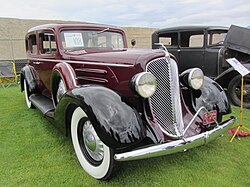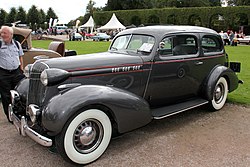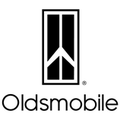| Oldsmobile Eight F-Series | |
|---|---|
 1934 Oldsmobile Eight L- Series Sport Coupe | |
| Overview | |
| Manufacturer | Oldsmobile (General Motors) |
| Production | 1932–1938 |
| Assembly | Fisher Body, Detroit, Michigan (main plant) Lansing Car Assembly, Lansing, Michigan (branch assembly) Linden Assembly, Linden, New Jersey (starting 1937) South Gate Assembly, South Gate, California (starting 1937) |
| Body and chassis | |
| Body style | |
| Layout | Front engine, rear drive |
| Platform | B-body |
| Powertrain | |
| Engine | 240.4 cubic inches (3.9 L) Oldsmobile straight-8 engine |
| Transmission | Automatic Safety Transmission (1937-1939) 3-speed manual transmission |
| Chronology | |
| Successor | Olds Series 80 [1] Olds Series 90 [1] |
The Oldsmobile L-Series, or the Oldsmobile 8, was built from the 1932 through 1938. Oldsmobile had not offered a full-sized luxury flagship since the cancellation of the Oldsmobile Light Eight in 1923, and the Viking upscale companion brand to Oldsmobile did not sell very well, being cancelled after two years. The 1933 model introduced a completely new body style influenced by the "streamlined" appearance, and it was shared with all GM brands due to GM's Art and Color Studio headed by Harley Earl. [1] The appearance showed influences of Chrysler and Lincoln-Zephyr vehicles, and all Oldsmobiles were manufactured in Lansing, Michigan. Due to the popularity of the Oldsmobile F-Series, Oldsmobile recognized an opportunity to sell a similar sized alternative to the Buick Super, the Cadillac Series 355, and the "junior" companion brand LaSalle a platform the L-Series shared on the GM C platform. [2] It was replaced by the Oldsmobile Series 90 introduced in 1938, and it was exported to Japan as a knock down kit and assembled at Osaka Assembly in Osaka, Japan.


